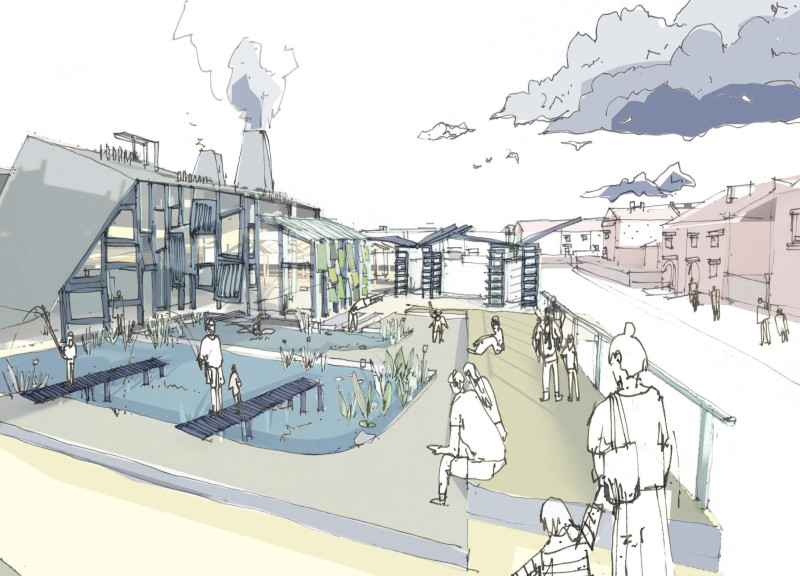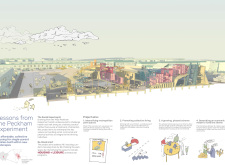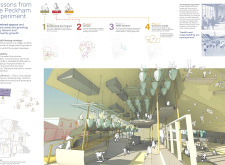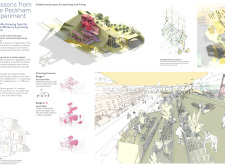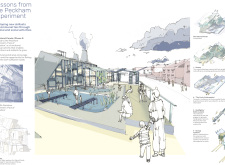5 key facts about this project
The Peckham Experiment project presents a collective housing model focused on providing affordable living for single-parent families in Peckham, Southwark, London. Inspired by the original Peckham Experiment from 1926, it emphasizes the importance of health and well-being as interconnected elements of life. The design aims to create a space where social, communal, and physical activities can flourish, enhancing the overall quality of life for its residents.
Collective Living and Phased Development
The development is structured in phases, allowing for gradual growth among single-parent families. The first phase sets the groundwork for the community, focusing on securing the site and establishing essential services. As families move in, subsequent phases facilitate expansion and adaptation, ensuring that living environments can respond to changing needs over time.
Integration of Community Land Trust
This initiative also incorporates a Community Land Trust model, which allows families to collectively own the land, promoting both affordability and sustainability. Self-sufficiency is a key principle that runs through the project, incorporating renewable energy and water systems to support long-term ecological responsibility. By planning for future needs, the design provides a sustainable solution to urban living.
Communal Amenities and Ecological Features
Significant features of the design include spaces for communal interaction and skill-sharing, as well as areas for selling produce grown on-site. These elements actively encourage economic participation while helping residents build connections with each other and their environment. The presence of natural ponds and designated nursery areas enhances biodiversity, providing residents with educational opportunities and fostering a sense of responsibility towards the environment.
The thoughtful integration of communal living spaces and natural elements establishes a supportive community atmosphere. Landscape gardens, growing areas, and open spaces not only serve practical functions but also emphasize harmony with nature, reflecting a commitment to both environmental stewardship and social cohesion.


